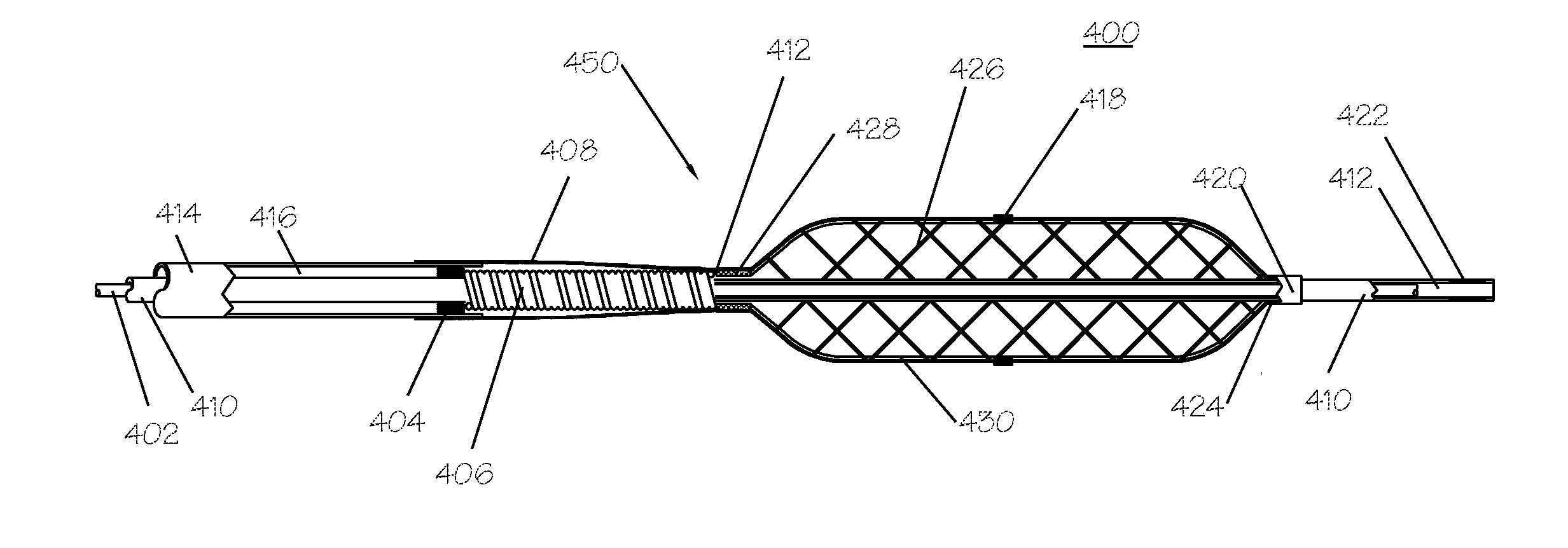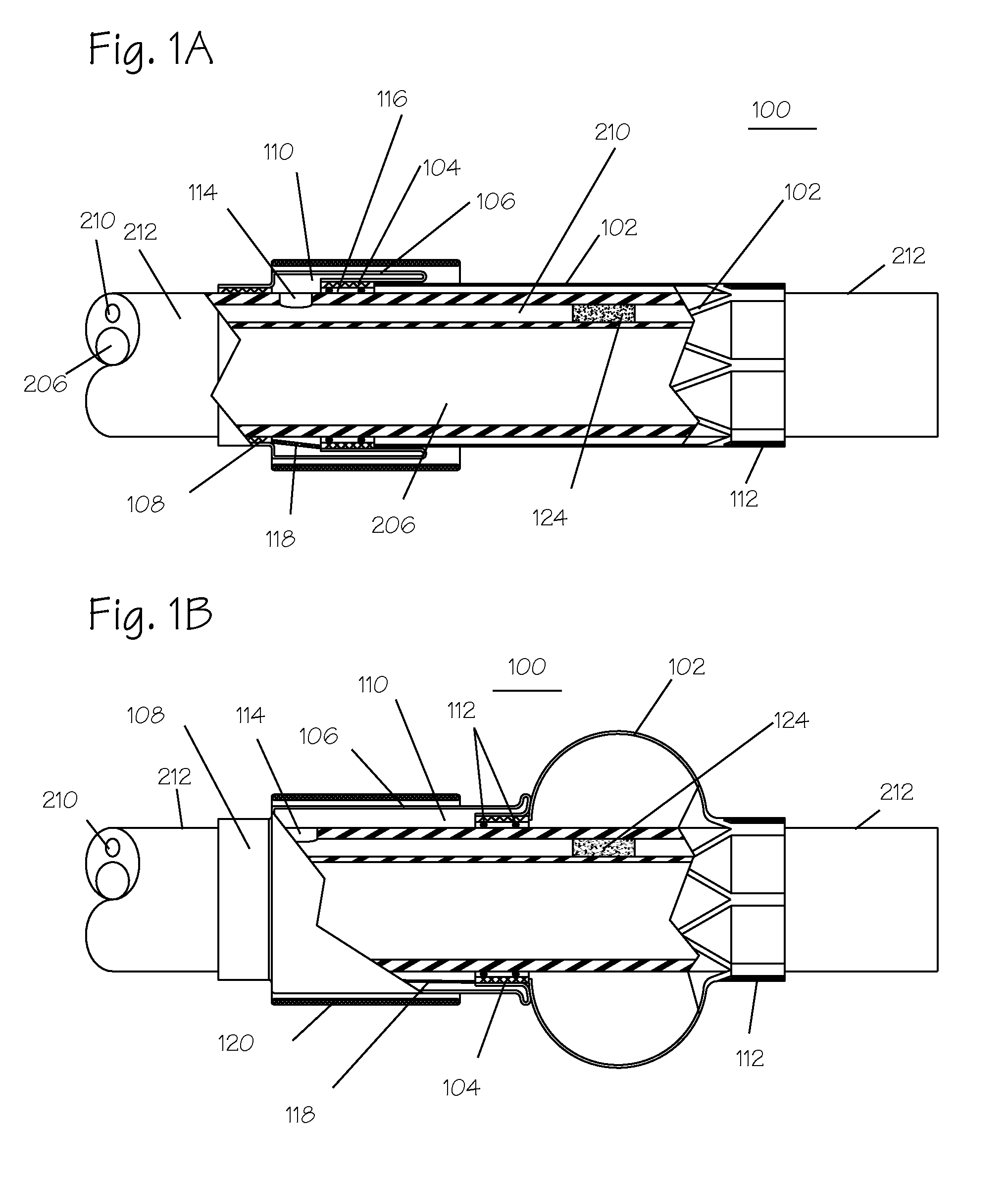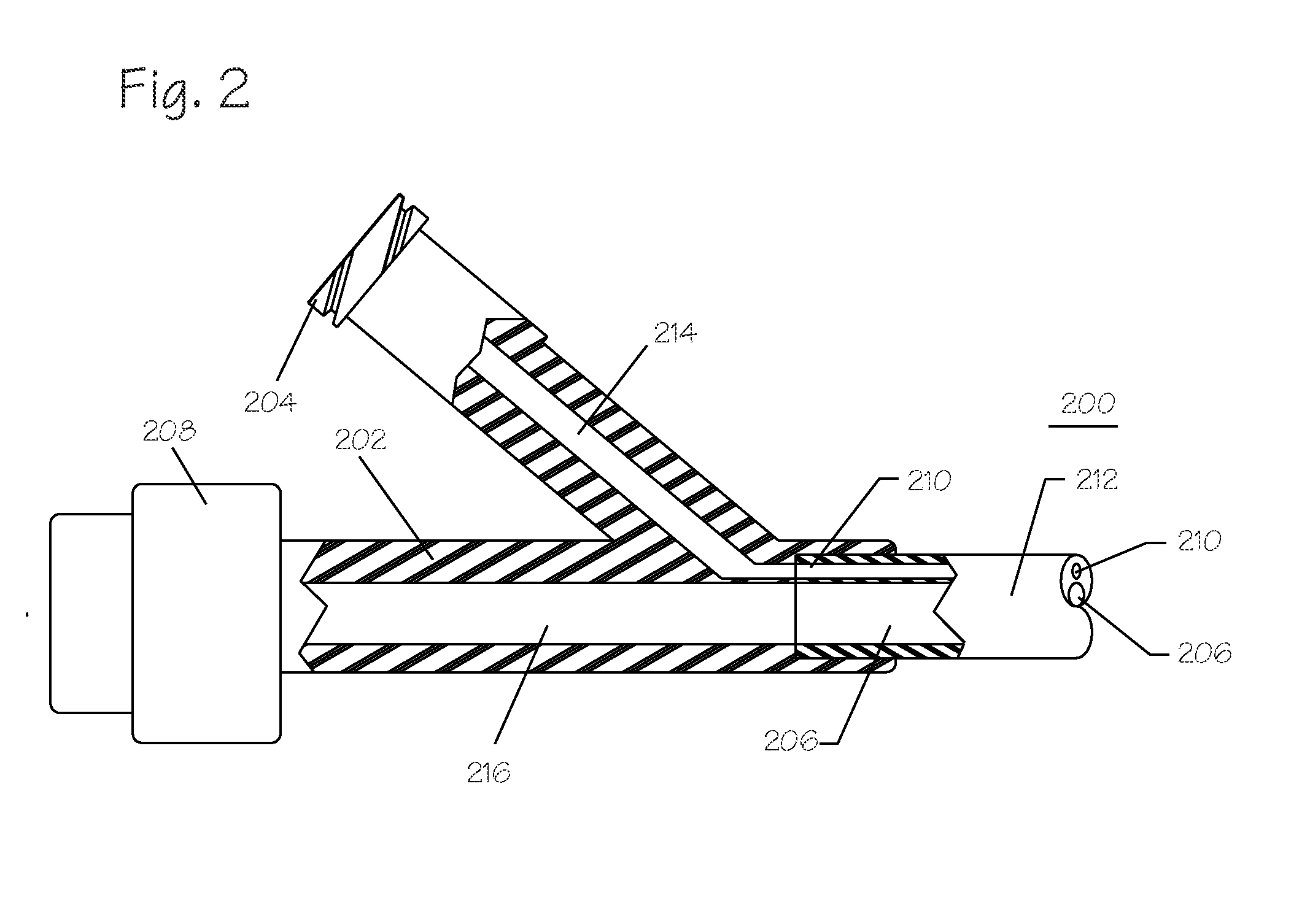Pressure Activated Foreign Body Removal System and Method of Use
a technology of foreign body removal and pressure activation, applied in the field of medical devices, can solve the problems of balloon angioplasty, increased risk of intracerebral hemorrhage and other hemorrhagic complications, and embolic strok
- Summary
- Abstract
- Description
- Claims
- Application Information
AI Technical Summary
Benefits of technology
Problems solved by technology
Method used
Image
Examples
Embodiment Construction
[0026]The devices described herein can be used to remove thromboembolic material from the vertebral artery or other cerebrovascular vessel. The occlusion site can be first localized with transcranial Doppler and angiogram. The catheter can be inserted through an incision on a peripheral artery into the symptomatic vertebral artery or the subclavian artery. For example, the distal end of a guide catheter can be inserted proximal to thromboembolic material in right vertebral artery and left subclavian artery. The foreign body removal catheter can be advanced through the thromboembolic material so that it resides distal thereto. The expandable region is expanded using fluidic systems to a second, larger diameter. The expandable catheter is withdrawn proximally, pulling the thromboembolic material therewith and into the open distal end of the guide catheter. The thromboembolic material may thereafter be removed from the vessel, optionally with the assistance of continuous or pulsed suct...
PUM
 Login to View More
Login to View More Abstract
Description
Claims
Application Information
 Login to View More
Login to View More - R&D
- Intellectual Property
- Life Sciences
- Materials
- Tech Scout
- Unparalleled Data Quality
- Higher Quality Content
- 60% Fewer Hallucinations
Browse by: Latest US Patents, China's latest patents, Technical Efficacy Thesaurus, Application Domain, Technology Topic, Popular Technical Reports.
© 2025 PatSnap. All rights reserved.Legal|Privacy policy|Modern Slavery Act Transparency Statement|Sitemap|About US| Contact US: help@patsnap.com



